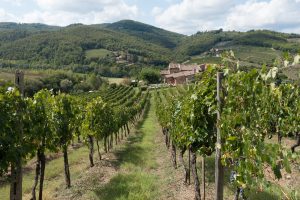
Italy is a country renowned for its rich culture and history, beautiful landscapes, delicious cuisine, and of course, its wine. With over 350 grape varieties and more than 500 DOC (Denominazione di Origine Controllata) and DOCG (Denominazione di Origine Controllata e Garantita) designated wines, Italy is home to some of the world’s most famous and beloved wines.
One of the best ways to experience Italy’s wine culture is to visit the country’s many vineyards. From north to south, Italy boasts some of the most stunning and unique vineyards in the world. Here, we take a journey through Italy’s wine regions and explore some of the country’s most fascinating vineyards.
Starting in the north, the region of Piedmont is home to the world-renowned Barolo and Barbaresco wines. These wines are made from the Nebbiolo grape, which is grown in the Langhe hills of Piedmont. The vineyards in this area are often small and family-owned, and many have been passed down through generations. One of the most unique vineyards in the region is the Cascina Francia estate, owned by the Conterno family. The estate is situated on a steep hillside and the vines are planted in narrow rows, making it one of the most difficult vineyards to cultivate in the region.
Moving east, the Veneto region is known for its Prosecco and Valpolicella wines. The region’s most famous vineyard is probably the Glera Vineyard, which is home to the Glera grape used in the production of Prosecco. The vineyard is located in the Valdobbiadene hills and covers an area of approximately 70 hectares. The Glera grape is known for its delicate flavor and aroma, and the vineyard’s location on the hillsides allows the grapes to receive plenty of sunshine, making them perfect for the production of Prosecco.
Heading south, Tuscany is one of Italy’s most famous wine regions, known for its Chianti and Brunello di Montalcino wines. The region is home to many beautiful vineyards, but one of the most unique is the Ornellaia estate. The estate was established in the 1980s and has since become one of the most famous wineries in Italy. The vineyards are planted on rolling hillsides, and the grapes are grown using a system called “massal selection,” where the best vines are selected and used for future plantings.
Moving further south, the region of Campania is known for its Aglianico and Fiano di Avellino wines. One of the most fascinating vineyards in the region is the Mastroberardino estate, which has been producing wine for over 300 years. The vineyards are located on the slopes of Mount Vesuvius, and the volcanic soil gives the grapes a unique flavor and aroma.
Finally, in the southernmost region of Italy, Sicily is known for its Nero d’Avola and Marsala wines. The region’s most unique vineyard is probably the Planeta estate, which is located in the Menfi area of Sicily. The estate is spread out over several different vineyards, each with its own unique terroir. The vines are grown in a variety of soils, including clay, limestone, and volcanic soil, which gives the grapes a unique flavor profile.
In addition to its many unique vineyards, Italy also has a rich wine history and culture. For example, did you know that the oldest wine bottle in the world was found in a Roman tomb in Speyer, Germany, and it contained a 1,650-year-old white wine from Italy also has a long tradition of wine-making, dating back thousands of years. In fact, wine was an important part of ancient Roman culture, and Italy has been producing wine since at least 800 BC. Today, Italy is the world’s largest wine-producing country, and its wines are enjoyed by millions of people all over the world.
One of the unique aspects of Italian wine culture is the concept of “terroir,” which refers to the environmental factors that influence the taste and character of a wine. Italy’s diverse geography, climate, and soil types create a wide variety of terroirs, which in turn give rise to the country’s many unique wine styles.
In addition to its many vineyards and rich wine culture, Italy also offers plenty of opportunities for wine enthusiasts to learn about and sample its wines. Many vineyards offer guided tours and tastings, allowing visitors to learn about the wine-making process and sample the wines produced on-site. In addition, Italy is home to many wine festivals, including the famous Vinitaly festival in Verona, which showcases some of the country’s best wines.
In conclusion, Italian vineyards offer a unique and fascinating window into the country’s rich wine culture. From the steep hills of Piedmont to the volcanic slopes of Mount Vesuvius, Italy’s vineyards are as diverse as the country’s many wine styles. Whether you’re a seasoned wine enthusiast or simply curious about the world of Italian wine, a visit to one of Italy’s many vineyards is sure to be an unforgettable experience. So, raise a glass of Barolo, Chianti, or Prosecco, and toast to the beauty and richness of Italian wine culture.